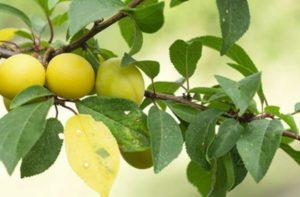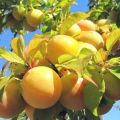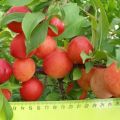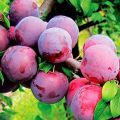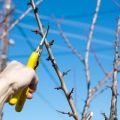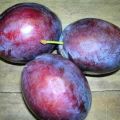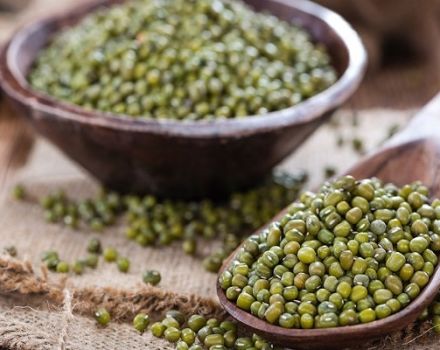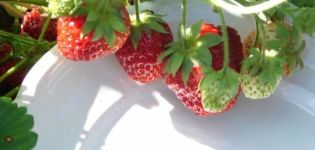Description of the best varieties of plums for the Urals, their planting and care
Plum is not considered a crop intended for regions with cold winters and sharp temperature changes in spring and summer. But the breeders pleased the gardeners with winter-hardy varieties of plums for the Urals. Each year the list of stone fruit hybrids is updated with new specimens with improved qualities. But with a large variety, it is difficult to choose those plum varieties that will successfully take root and will give full yields.
Content
- 1 Variety and characteristics of plum varieties for the Urals
- 1.1 The pride of the Urals
- 1.2 Chemal's gift
- 1.3 Pearl of the Urals
- 1.4 Chebarkulskaya
- 1.5 Snow White
- 1.6 Ural prunes
- 1.7 Ural golden
- 1.8 Kuyashskaya
- 1.9 Uyskaya
- 1.10 Shershnevskaya
- 1.11 Krasnoselskaya
- 1.12 Ailinskaya
- 1.13 Uvelskaya
- 1.14 Zolotaya Niva
- 1.15 Manchu beauty
- 1.16 Pioneer
- 1.17 Yellow Hopts
- 1.18 Ural dawns
- 1.19 Honey
- 1.20 Commander
- 1.21 Imperial
- 1.22 Blue Sweet
- 2 How to plant and grow a tree
- 3 Preventive actions
- 4 Common mistakes gardeners make
Variety and characteristics of plum varieties for the Urals
The difficulties of growing plums in the Urals and Siberia include:
- spring frosts destroy the plant;
- the risk of drying out in winter increases;
- the root system freezes during the winter with little snow.
For the gardener, the question of which varieties are best to plant is important. They choose not only winter-hardy ones, but those capable of withstanding cold winds characteristic of a sharply continental climate. You should not choose those that are tall. Shrubs and trees take root better and endure the winter of medium height. But a big role for summer residents is played by the description of the fruits, their taste.
The pride of the Urals
The variety was obtained by pollination of plum Pearl back in the 50s of the XX century. Since then, it has been zoned by the Ural gardeners. But it is popular both in the Caucasus and Siberia. In addition to resistance to frost below 30 degrees, the plum is different:
- high yields up to 35 kilograms from one tree;
- early maturity;
- ripening plums after 120 days;
- a tree height of 4 meters;
- reddish fruits of medium weight.
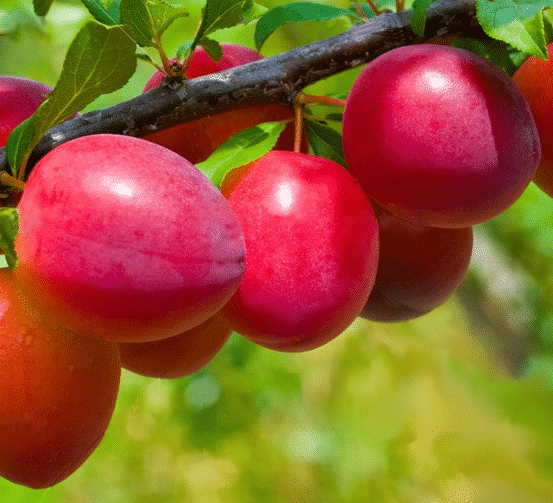
Caring for the variety is simple. It does not require pruning and develops quickly. Fruits with sweet and sour taste and delicate pulp. They are universal for their purpose. Plums of this variety require pollinators.
Chemal's gift
On a medium-sized tree in the 3-4th year, rounded fruits with a deep funnel and a slightly noticeable seam appear. Under the orange skin with a red blush, delicious greenish-yellow pulp. Harvested in the second half of August. Plum tolerates winter well, but is not resistant to damping.
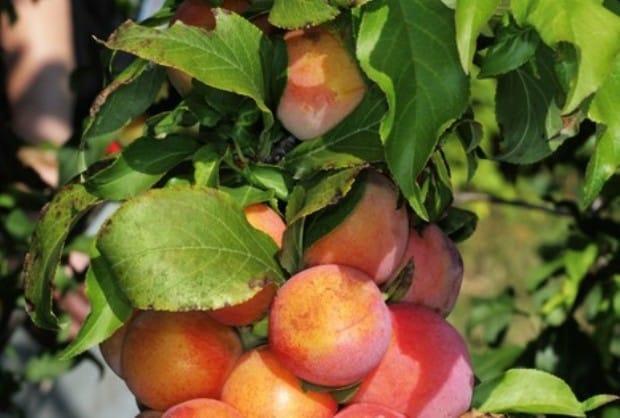
Pearl of the Urals
The variety was bred in the South Ural Research Institute of Fruit and Vegetable Production and has been zoned since 2006.A medium-sized tree with a spreading crown has an average foliage. Bears fruit on mixed and fruit shoots. Plum ripens large, up to 25 grams each, with a smooth surface of green skin. The variety is noted for a juicy pulp of a delicate structure with an elongated bone. The plum is given 4.7 points in terms of taste. There are more sugars in fruits than acids.
The culture is partially self-fertile, with an average ripening period. Shoots are rarely damaged by frost in winter, but there is partial damage to flower buds in spring by frosts.
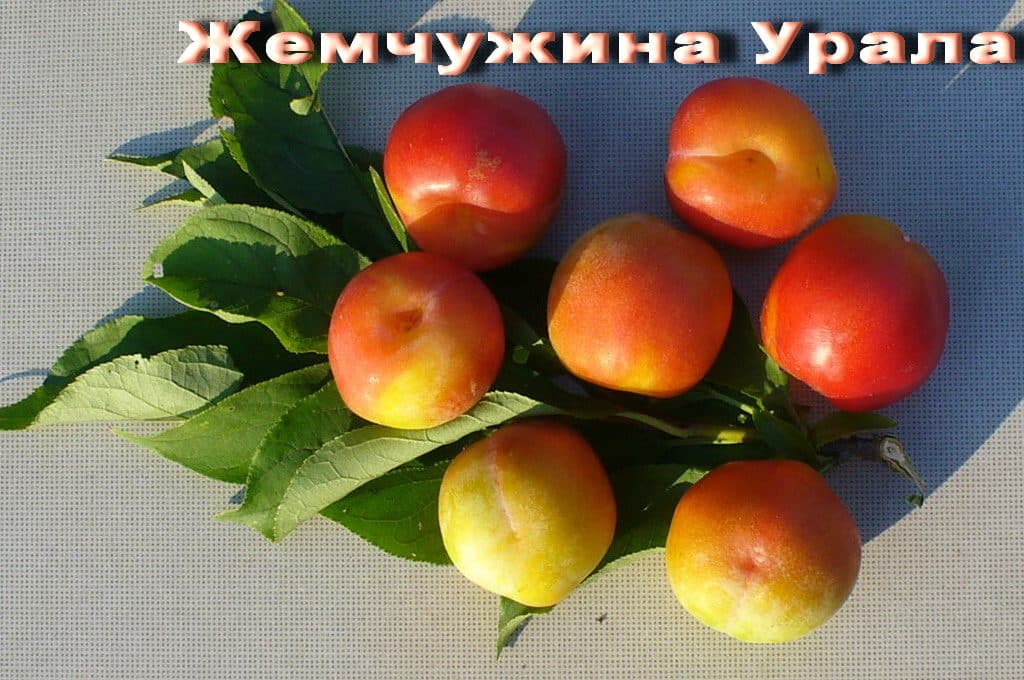
Chebarkulskaya
The plum tree reaches a height of 3.5 meters and has a spreading crown. The variety has blue fruits, large, weighing 30 grams each. The value is in the tasty pulp, medium fiber, greenish yellow color.
Snow White
A specially developed variety for the Urals and Siberia tolerates frosts up to 40 degrees. The tree is not tall, but with a crown spreading by 4 meters. The surface of the plum fruit is yellow with a whitish waxy coating. With good care, they reach 30 grams in weight, and the harvest from a tree is 20-30 kilograms. The plum tastes sweet with a slight sourness.
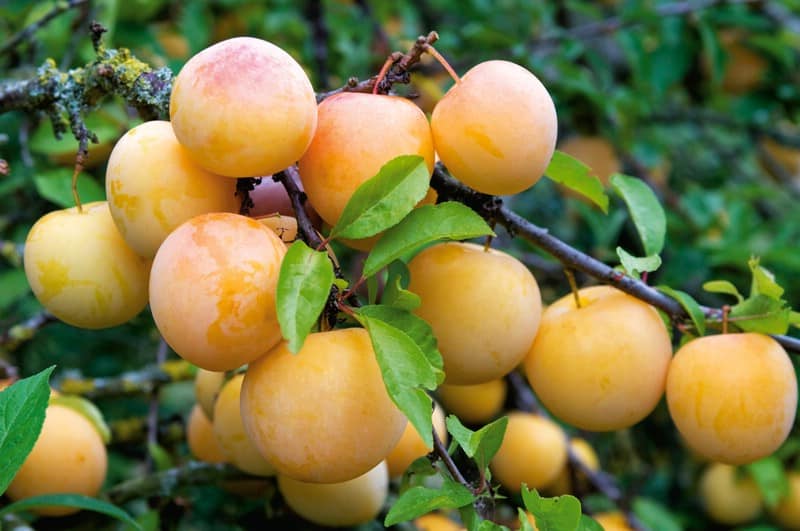
Ural prunes
The medium-late ripening culture is famous for its dark blue, almost black fruits. They weigh 15 grams, are elongated, sweet in taste with little astringency. Medium-sized bone is easily separated from the pulp. The variety is winter-hardy, high-yielding, with excellent transportability. The fruits are good in dried form, compotes.
Ural golden
Appeared in the State Register in 2004. The appearance and taste of the fruit are of excellent quality. The main color of the skin is yellow, the flesh is of the same color. The inside is medium in size and can be easily separated. Plum has good transportability. A medium-sized tree is harvested annually, starting from the 4th year of life. The advantage of growing plums is their resistance to disease, little frost damage.
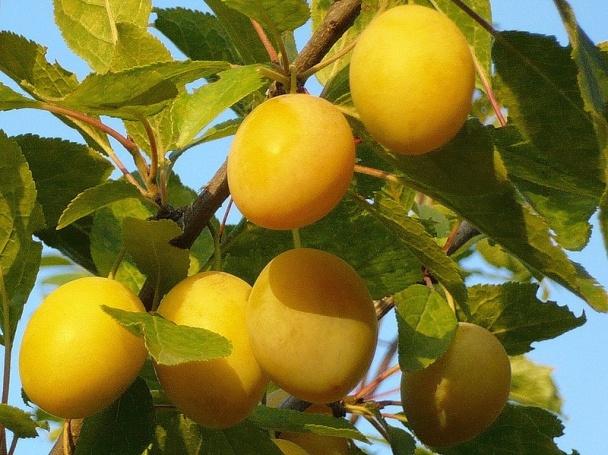
Kuyashskaya
Plum is medium-sized, blooms and bears fruit on shortened shoots... Fruits are round, without a seam, with a smooth reddish surface. The pulp is yellow, slightly fibrous. Tastes more sugars than acids. The separation of the bone from the pulp is average. Fruiting in periods.
The tree differs in that it easily tolerates spring frosts up to minus 5 degrees.
Uyskaya
The plum variety has a sparse, non-thickening crown with a tree height of 3 meters. With an average yield of up to 15 kilograms per plant, it is valued for the original orange fruits with a bright blush. The pulp is fine-grained, juicy, sweet. Plum is pollinated well by the Ussuri stone fruit culture.
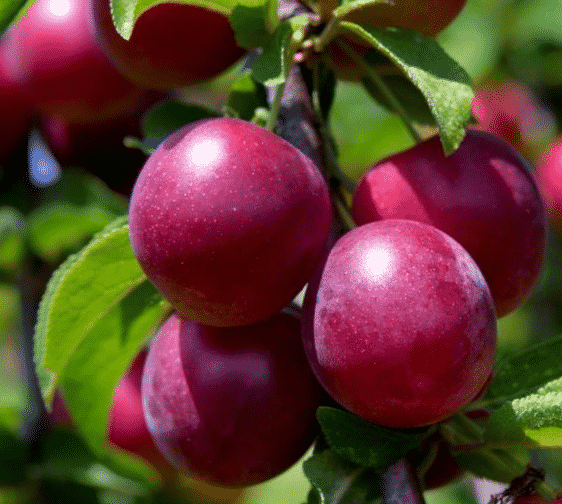
Shershnevskaya
The variety was obtained by free pollination of the Ussuri plum. The plant is valued for:
- aroma and taste of fruits;
- good separation of the bone from the pulp;
- universality of appointment;
- slight frost damage;
- resistance to fungal infections;
- annual fruiting;
- high yields.

Plum blossoms and bears fruit on bouquet twigs.
Krasnoselskaya
In a tree with a spreading crown, the leaves are round with a shortly pointed tip, green in color. Plum berries with yellow flesh, and the skin on top is smooth, red. Fruit weight is usually 20 grams or more. Ripe plums are used for processing. The harvest is late.
Although the variety is winter-hardy, it is sometimes damaged by spring frosts.
Ailinskaya
The hybrid was bred by crossing a sandy crop with a varietal Golden Plum. The tree grows poorly, but has a wide crown. The fruit has a purple-colored cover with a strong waxy bloom. Plums with a light, yellowish-green pulp, sweet, with an easily detachable stone. The tree blooms in May, and ripens in August.

Uvelskaya
The seedling obtained by free pollination has medium vigor and leafiness.The leaves are rounded with a blunt base and a pointed tip of rich green color. Fruits appear on shortened shoots. They reach a mass of 23-24 grams. The pulp has high sugar content and low acidity. Plum tolerates transportation well.
The culture belongs to the late-ripening species, resistant to frost and rarely suffering from fungal infections.
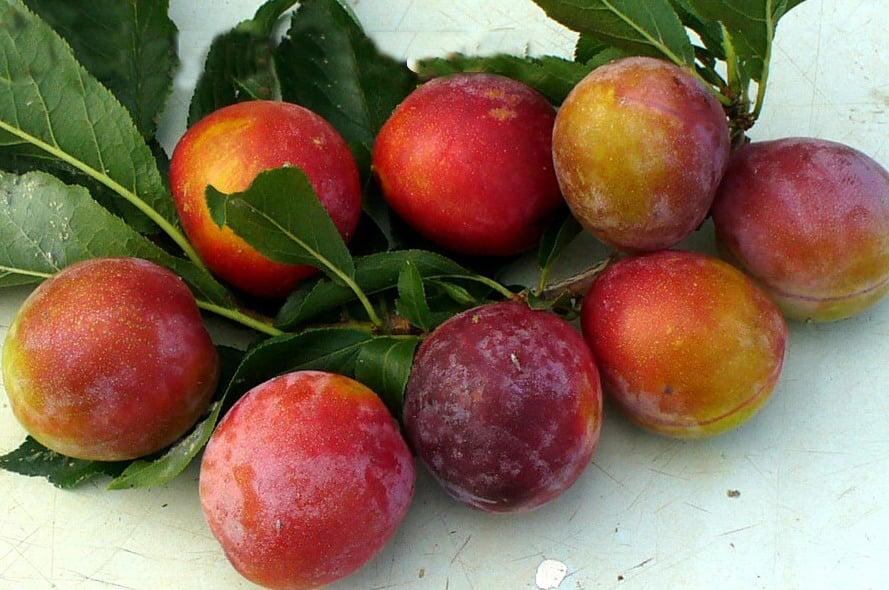
Zolotaya Niva
The hybrid is a medium-ripening plant. Plum is distinguished by golden-sunny color of round fruits. And their pulp is juicy, tender, sweet. The stone is medium in size and is easily separated from the pulp. A tree of average 2-meter growth, with a wide crown, inside which branches are raised up. Fruiting in the culture is regular.
Manchu beauty
The plum combines the qualities of 3 types: Chinese, Ussuriyskaya and Simon. A round-shaped dwarf with a thickened crown has a number of advantages:
- The rapid awakening of the buds leads to strong branching of the tree.
- A burgundy blush spreads on the yellow-orange background of the fruit.
- The bone is small.
- Plums reach ripeness in August-September.
- Culture conveys valuable traits to the offspring well.

It is known that the plant is winter-hardy, resistant to some diseases.
Pioneer
The original variety was obtained by free pollination from selected Ussuri plum. The tree reaches a height of 3-4 meters. It has a lush spreading crown. Dark red fruits reach a weight of 18-20 grams. Plum with a smooth glossy surface, rounded base and pointed top. The fruits are sweet, ripen in mid-August. The variety is transportable, with a yield of up to 35-40 kilograms per tree.
Yellow Hopts
Self-fertile plums from China were brought back in the first half of the last century and spread throughout the Far East, the Urals. The tree differs:
- vigorous growth;
- spreading but sparse crown;
- oval leaves;
- rounded fruits with flattening, weighing 12-14 grams;
- yellow plums, waxed on top;
- friable pulp of sweet and sour taste.

The stone is large inside, but easily separates from the pulp. Plums do not tolerate transportation well. They are best consumed fresh.
Ural dawns
The advantage of the variety will be that it:
- ripens early: at the end of July - in August;
- pleases with fruits of 25-30 grams;
- winter-hardy;
- develops into trees with a spreading crown, a trunk height of 2.5-3 meters.
Plums have a dark red cover, with a bluish bloom, delicious.
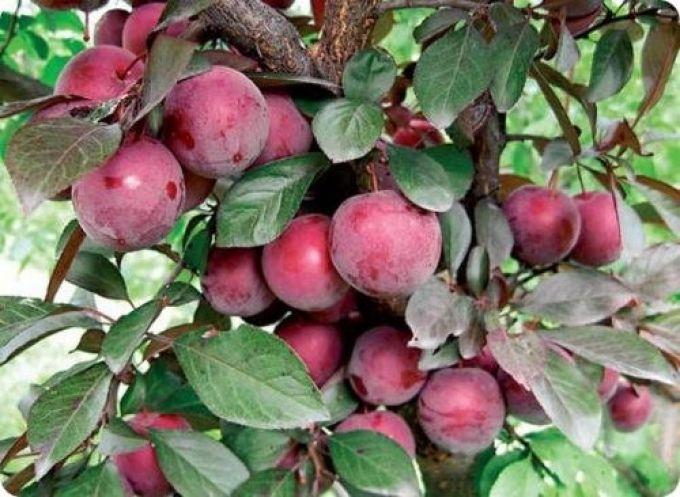
Honey
One of the unpretentious varieties of culture, pleasing with high yields, has a delicious aroma and taste of fruits. The prevalence of the hybrid is high, tolerates weather changes in a cold climatic zone well. Oval fruits with transparent yellow skin reach a weight of 30-50 grams. When ripe, plums turn orange with a whitish bloom, they are used universally.
Commander
Plum belongs to the columnar species, therefore the tree has a compact crown, and the height reaches 2 meters. Entering fruiting in the 2nd year of life, it pleases with fruits of 50 grams. They have a juicy, yellowish pulp with a refreshing acidity.
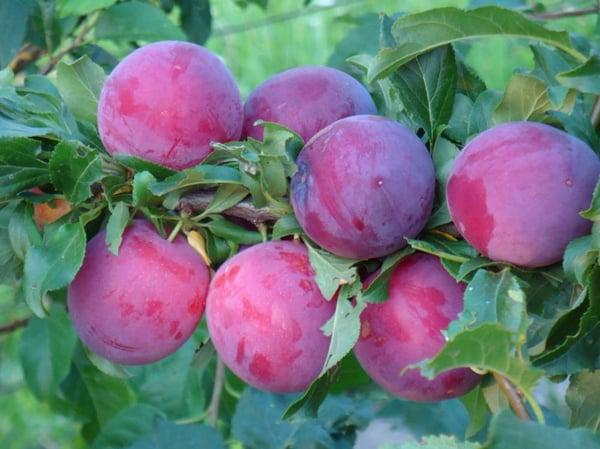
Imperial
The new hybrid of the columnar type has only recently become known to the gardeners of the Urals. The crown of the tree looks like a narrowed pyramid. The height of the culture with a brownish trunk reaches 2 meters. Fruits are found throughout the tree and are round in shape. And the flesh of the plum is golden, with a honey flavor. The variety is winter-hardy, has a strong immunity to fungal infections.
Blue Sweet
Columnar plum varieties are represented in the Urals by the Blue Sweet hybrid. The crown of the tree has no side branches and is directed upwards. The pulp of the fruit is hidden under a thick skin, but it is tender, juicy. The harvest is kept fresh for a long time, and it is large and reaches up to 80 kilograms from 1 column.

How to plant and grow a tree
The cultivation of plums in the Urals is not much different from the agricultural technology of wood in other regions. But you need to choose the right planting time so that the seedling has time to take root, get stronger.
Preparation of planting material
For cultivation, it is necessary to select crops that are suitable for the Ural region. It is necessary that the hybrid is a winter-hardy species and not damaged by spring frosts.
When purchasing a plum sapling, pay attention to the fact that it has a strong root system. The roots should not be dry or rotted. Annual seedlings usually reach a height of 1-1.3 meters.
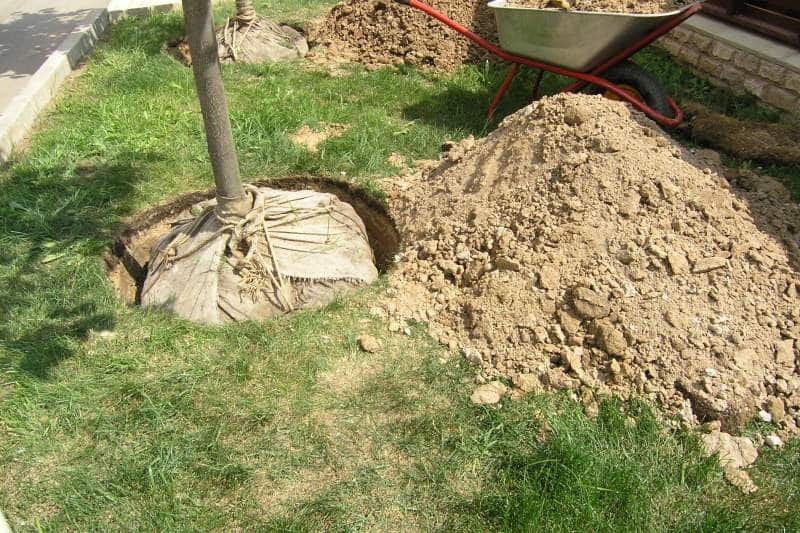
If a plum is prepared for spring planting, then it is added to the grooves for the winter to a depth of 40 centimeters. Biennial specimens of trees take root most quickly.
Dates and technology of disembarkation
Plum is planted in spring as soon as the soil thaws, within 2 weeks. Then it is better to prepare the pit in the fall with a depth of 40-50 centimeters with a width of 70.
Autumn planting is carried out 1.5 months before frost. The hole is dug in 2 weeks. Be sure to add a bucket of humus, superphosphate and potassium salt to each hole. Fertilizers are mixed with the fertile layer and the pit is filled. For looseness, add coarse sand.
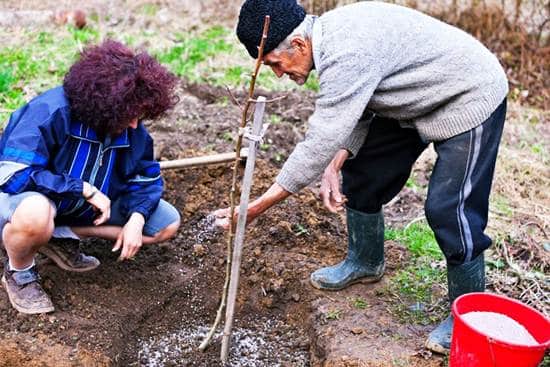
The distance between seedlings can reach from 1.5 to 4 meters, depending on the variety and the width of the crown in the future.... For self-fertile types of plum, pollinators are needed nearby.
Conditions for good growth and fruiting
For planting plums, choose a place well lit by the sun and closed from the wind. The soil is needed for the culture, nutritious, loamy chernozem is suitable. The acidity of the garden soil should be neutral, and the groundwater should be no higher than 1.5 meters to the surface.
Regularity of watering
The first time they irrigate the land around the plum after planting, using up to 20 liters of water for each seedling. During the summer, water the crop once every two weeks, increasing the frequency during hot and dry seasons.
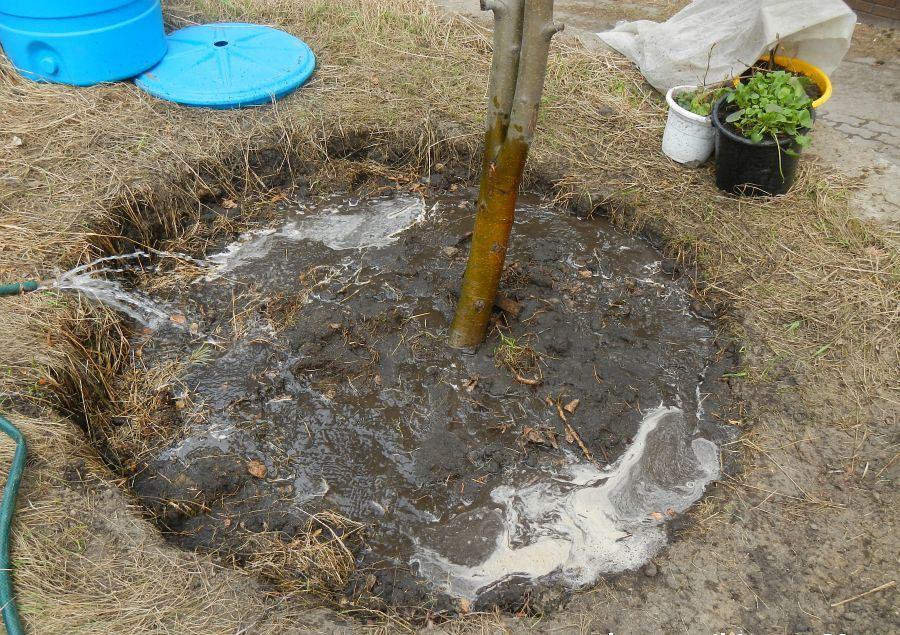
For an adult plant, watering is reduced to 1 time per month. It is also useful to carry out sprinkling of trees with spraying of the crown in hot weather in the evening. Mulching the trunk circle will help keep moisture in the soil.
Foliar and root fertilizers
In the first year of life, the plum has enough nutrients that it received during planting. Water the trees with a nutrient solution of urea at the root in the 3rd year of the plant's life. Foliar feeding takes place with the addition of carbamide, 2 tablespoons per 5 liters of urea solution. The procedure is carried out in May.At the beginning of summer, they feed them with nitrophos, 30 grams of funds per bucket of water. Top dressing should be foliar.
In August, the grooves around the plum are shed with organic and mineral solutions. For the introduction of organic matter, chicken manure or humus is used, from mineral - wood ash (70 grams) in a bucket of water with superphosphate and potassium salt (15 grams each).
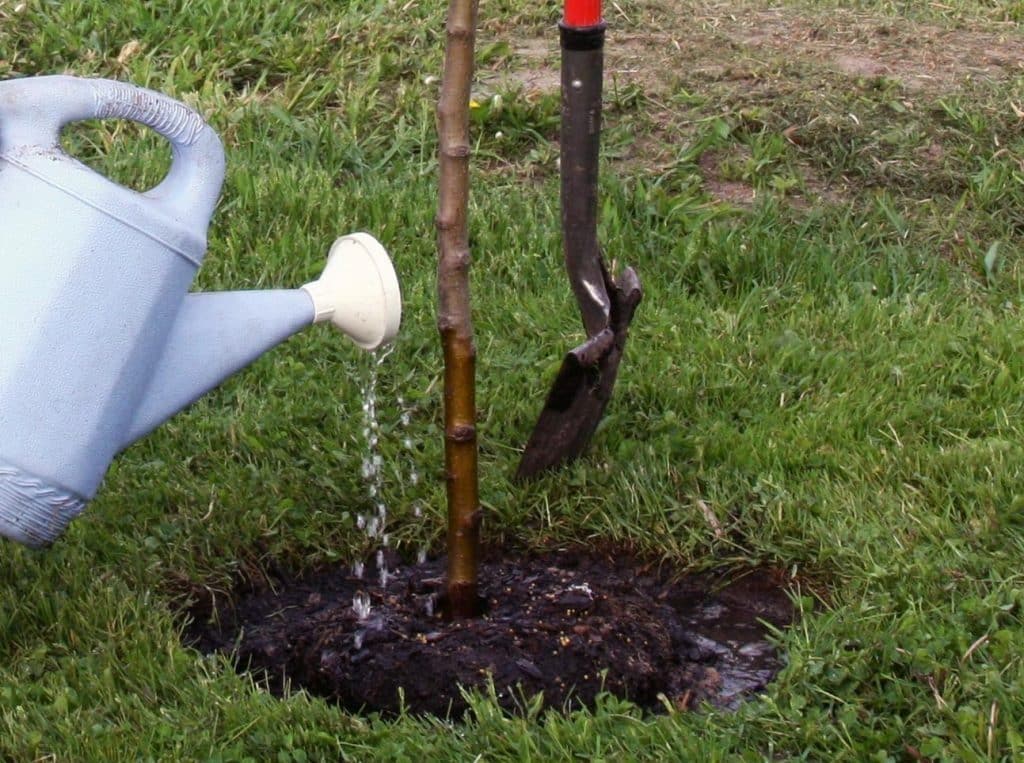
Barrel circle care
The near-trunk circle is indicated during landing with a radius of one meter. It must be constantly loosened, free from weeds. Mulch is applied around the plum at the end of winter on the snow, and in the fall, when digging, peat or humus is embedded in the ground. The circle is freed from mulching when the summer is rainy, and there is enough moisture.
Forming the correct shape
Plum pruning is carried out regularly, in spring and autumn. It is needed to form the crown, thinning it out. The procedure is carried out with well-sharpened tools: a pruner, a saw, a garden knife.
After pruning, the branches are coated with pitch or disinfectant solutions.
In the first year of life, the tree is cut so that the stem is a meter high. The next year, skeletal branches of the 1st order are formed, and the stem is shortened by one growth bud. In an adult tree, you need to free the bole from the side shoots, cutting off last year's growth by half.
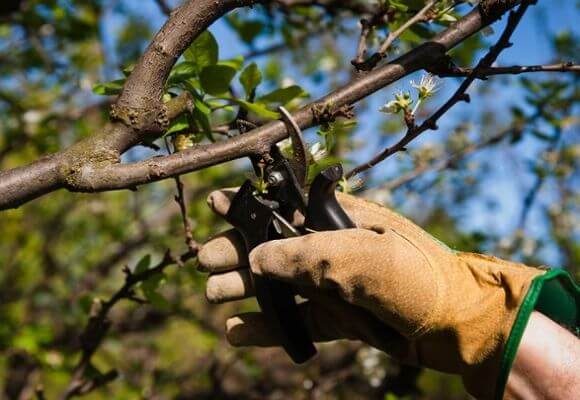
In the Urals, it is better to form a crown in early spring, and in autumn to carry out sanitary and rejuvenating pruning.
Preventive actions
Prevention measures against diseases consist in processing plums with Bordeaux mixture in spring and autumn after harvest. It will help to protect against pests and pathogenic microorganisms loosening and digging the trunk circle after the snow melts and before wintering. It is necessary not to forget about cleaning the garden from plant waste, burning foliage and cut branches.
To protect the plum trunk from burns, it is necessary to whitewash it in spring and autumn. Smoke heaps in the garden will save from spring frosts.
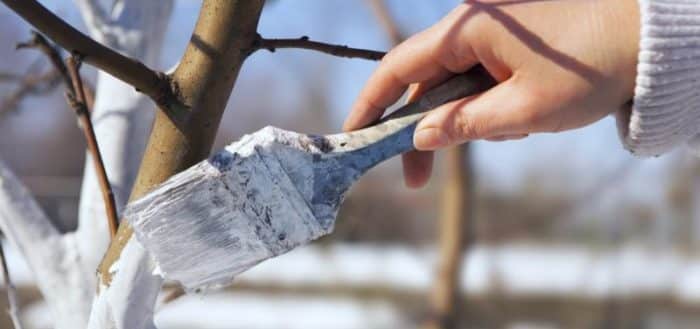
Preparing and sheltering a tree for the winter
Before wintering, plums need abundant watering and fertilizing with mineral fertilizers. A young tree requires shelter. Therefore, it can be wrapped in 2-3 layers with spandbond or other non-woven material. Small trees are covered with spruce branches.
Common mistakes gardeners make
Among the common mistakes in growing a stone fruit culture is that:
- Self-infertile varieties are left without pollinators.
- Plants are not protected from diseases and pests, therefore they do not bear fruit.
- Young trees are poorly watered, and they develop for a long time.
- Swampy and acidic soils lead to plant death.
- The selected variety does not correspond to the growing region, therefore it does not bear fruit and withers.
Before you start growing plums, you need to familiarize yourself with the rules of plant agricultural technology, consult with experienced gardeners about choosing a variety.
